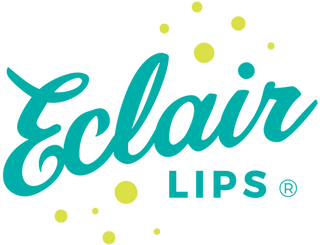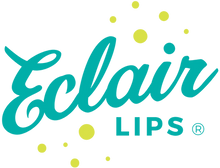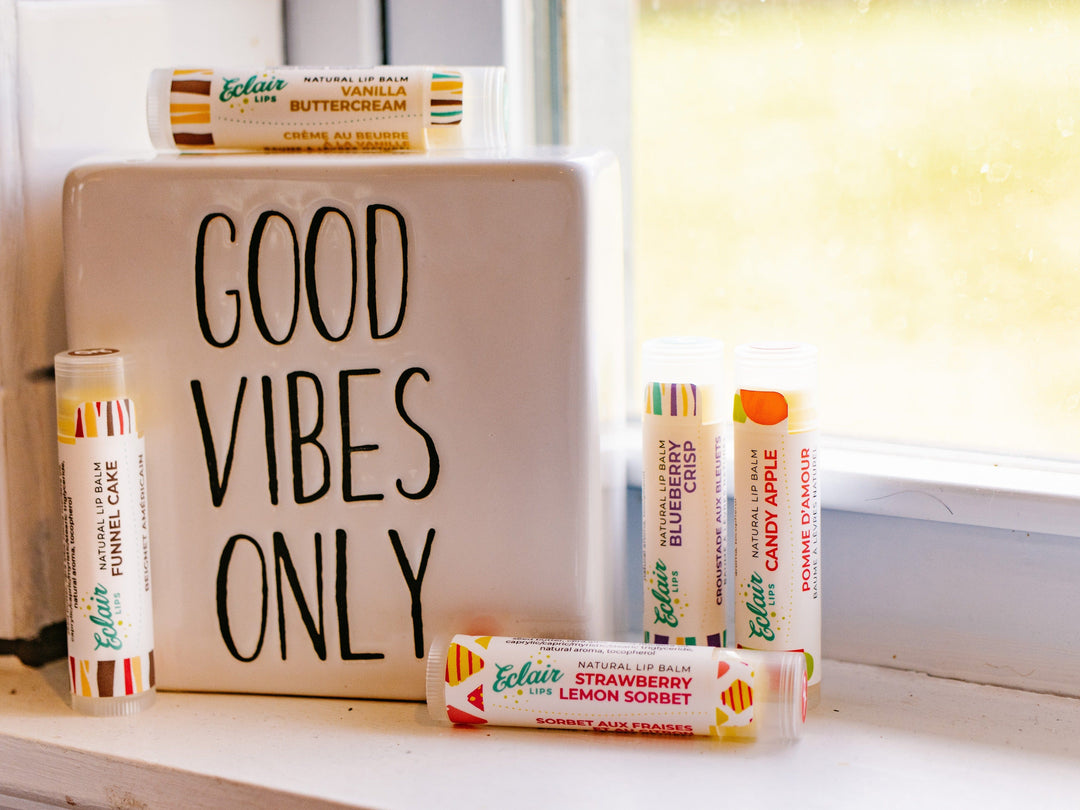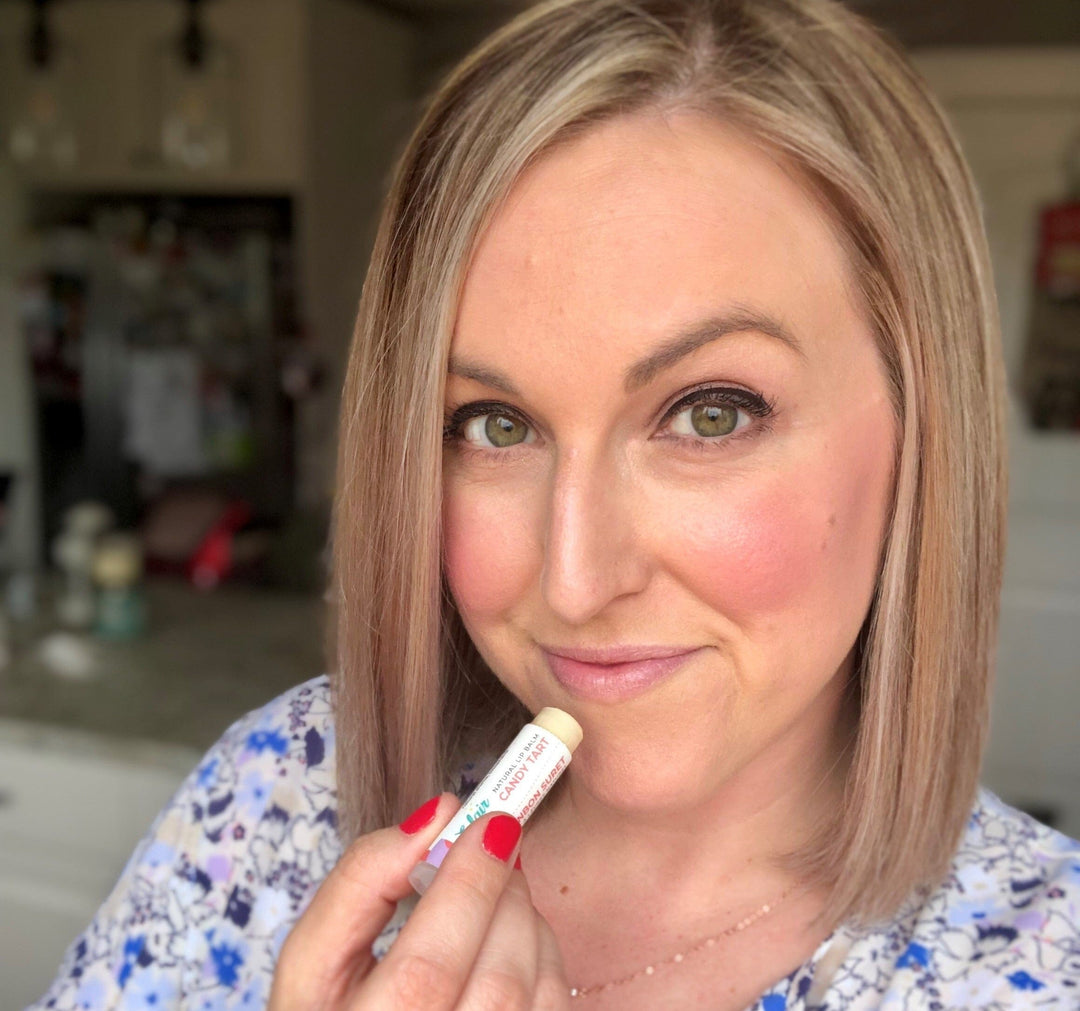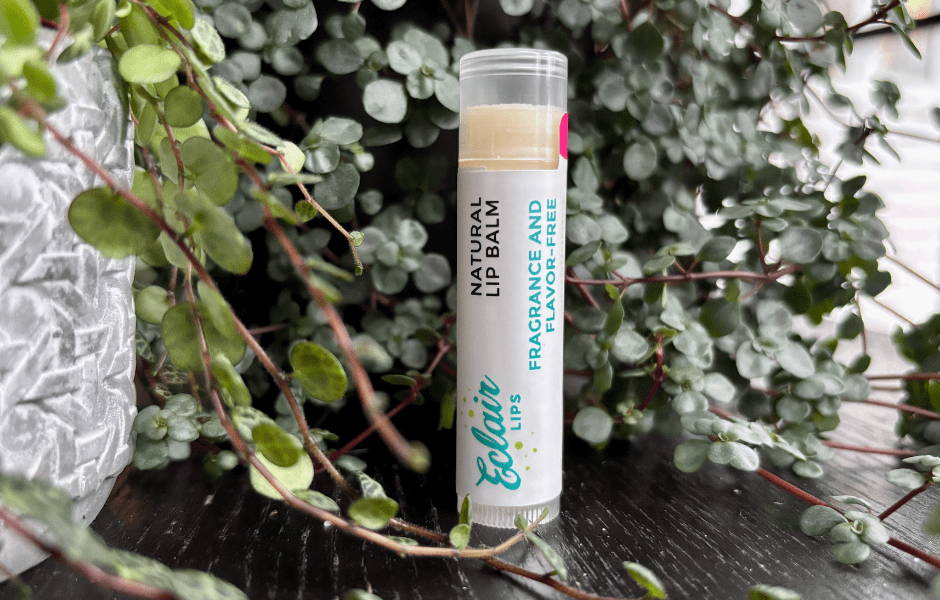Lip Mask vs Lip Balm: Which One Does Your Lips Really Need?
Understanding the Difference Between Lip Mask and Lip Balm
The lip mask vs lip balm question has gotten more confusing as the lip care market has exploded. A few years ago, you had balm or maybe a gloss. Now there are sleeping masks, treatment masks, overnight masks, and countless balm variations. So what's the real difference between these products, and does it actually matter which one you use?
The short answer is that lip balms are your everyday lip hydrator, the one you swipe on throughout the day for quick relief and protection. Lip masks are like the intensive therapy version, thicker and richer treatments designed for deeper, longer-lasting hydration (often overnight).
But it's not that you have to pick just one. They actually work really well together, and understanding what each one does helps you build a lip care routine that actually works.

Quick Takeaway
- Lip balms are lightweight, wax-based protectors you use throughout the day for quick moisture and barrier protection
- Lip masks are thick, intensive treatments (often overnight) with higher concentrations of healing ingredients for deep repair
- They complement each other: use balm for daily maintenance and masks for intensive therapy when your lips need extra TLC
- Balms last 1-2 hours before wearing off, while masks can moisturize for 8+ hours overnight
Contents
What Is a Lip Balm (And How Does It Work)?
A lip balm is the everyday lip hydrator most of us know well. It's usually wax-based, forming a protective barrier on your lips to lock in moisture and prevent dryness. You swipe it on as needed throughout the day for immediate relief when your lips feel tight or as a preventative shield before you head outside.
Balms focus on surface-level moisture and protection. They relieve chapping and often contain healing ingredients like vitamin E or aloe for minor repair, but the effects are typically short-term.
Most balms wear off or get absorbed within an hour or two (or you lick them off, let's be honest). The main job of a lip balm is to create that protective layer between your lips and the harsh world, whether that's cold wind, dry indoor air, or just normal daily wear and tear.
The texture of a good balm should glide on smoothly without feeling waxy or sticky, and it should feel comfortable enough that you actually want to reapply it multiple times a day. That's where formulation really matters. Balms with the right ratio of waxes, oils, and butters give you that "just right" feel, smooth enough to enjoy but substantial enough to actually protect your lips.
What Is a Lip Mask (And When Do You Need One)?
Lip masks are essentially supercharged balms. They're thicker, richer treatments intended for deeper, longer-lasting hydration. While your regular balm might come in a slim tube you toss in your pocket, lip masks often come in pots or squeeze tubes and are meant to be applied in a generous layer and left on for an extended period.
Think of a lip mask as a concentrated dose of hydration for your lips, similar to how a face mask works for facial skin. These formulations are packed with emollients and occlusives like rich shea butter, cocoa butter, healing oils, and often high-tech ingredients like hyaluronic acid that draw moisture into your lips.
The mask creates a thick coat that stays on for hours, allowing those ingredients to actually penetrate and repair your lip barrier.
Many lip masks are specifically designed for overnight use. You apply a thick layer before bed, and the mask essentially marinates your lips in moisture while you sleep. Because the mask capitalizes on your skin's natural repair cycle at night, you often wake up with noticeably softer, plumper lips.
Of course, you can also use a mask during the day as a heavy-duty treatment if your lips are extremely dry or damaged.

The Key Differences Between Lip Balm vs Lip Mask
Depth and Duration of Hydration
The biggest difference between a lip mask and lip balm comes down to how deeply and how long they hydrate. Lip masks provide deeper and longer-lasting hydration than balms.
While a balm might wear off after an hour or two, a good lip mask can moisturize for 8+ hours, especially when worn overnight. Dermatological research shows that lip masks provide more powerful ingredients that fortify the skin barrier to seal in moisture, with longer-lasting effects that coincide with natural skin repair at night.
Balms, in contrast, focus on basic moisturising. Any repair is more gradual and limited to surface relief. They're excellent for maintenance and quick fixes, but they're not designed for the intensive therapy that masks deliver.
Texture and Wear Time
Lip balms are lightweight and meant to soak in relatively quickly, so you can layer them under lipstick or gloss without feeling like you've slathered petroleum jelly all over your mouth. The texture is designed to be comfortable for frequent reapplication throughout the day.
Lip masks are thicker and more occlusive. The rich texture forms a longer-lasting layer that doesn't disappear the moment you take a sip of water. Many people find this thick feeling satisfying at night (it's like tucking your lips into bed), but it might feel too heavy or glossy for daytime wear under other lip products.
Ingredients and Concentrated Effects
Both products share common ingredients like waxes, butters, and oils, but masks typically have higher concentrations and added active ingredients.
A mask might include antioxidants like vitamin E and C, peptides to actively repair and plump lips, or specialized humectants like hyaluronic acid that pull moisture into the skin.
Balms usually stick to the basics: occlusives like beeswax or petrolatum to create a barrier, emollients like coconut oil or shea butter for smoothness, and maybe some vitamin E for preservation. They're formulated for comfort and everyday protection, not intensive repair.
When to Use a Lip Balm
Use a lip balm for day-to-day maintenance. Keep one on hand for frequent touch-ups, protection during the day, and layering under other lip products.
If you're heading out into cold weather, apply a protective balm before you leave the house. If your lips feel tight after lunch, swipe on some balm. If you're about to put on lipstick, a quick layer of balm underneath helps it glide on smoothly.
Balms are your everyday defense. They're lightweight, portable, and easy to reapply whenever you need them. For people with sensitive lips, a fragrance-free option works beautifully as a daily go-to that won't cause irritation with repeated use.
Balms are perfect for:
- Frequent reapplication throughout the day
- Layering under lipstick or gloss
- Carrying in your pocket or purse for on-the-go use
- Quick relief when your lips start feeling dry
- Creating a protective barrier before heading outdoors

When to Use a Lip Mask
Use a lip mask when your lips need extra TLC. If they're severely dry, cracked, or damaged after exposure to harsh elements (like cold wind or sun) and your regular balm isn't cutting it, that's when you reach for a mask. They're ideal for overnight treatments: apply a thick layer before bed to repair and prevent moisture loss as you sleep.
Some people use a mask nightly as part of their routine during dry seasons (hello, Canadian winter). You can also use a mask during the daytime as a "lip conditioner."
For example, slather on a mask while you're getting ready in the morning, let it soak in for 10-15 minutes, then wipe off any excess before applying lipstick. Your lips will be smooth, plump, and primed.
Lip masks are ideal for:
- Overnight intensive repair while you sleep
- Severely chapped or cracked lips that need more than basic care
- Recovery after harsh weather exposure
- Prep work before applying lipstick for a smoother canvas
- Weekly or nightly intensive treatments during dry seasons
Lip Mask vs Lip Balm: The Comparison Table
| Feature | Lip Balm | Lip Mask |
|---|---|---|
| Texture | Lightweight, absorbs relatively quickly | Thick, rich, stays on for hours |
| Duration | 1-2 hours before wearing off | 8+ hours (especially overnight) |
| Ingredients | Basic waxes, oils, butters for protection | Higher concentrations plus actives like peptides and hyaluronic acid |
| Best For | Daily maintenance, frequent touch-ups | Intensive repair, overnight treatment |
| Application | Multiple times throughout the day | Once before bed or as needed for deep treatment |
| Under Makeup | Works perfectly as a base layer | Too thick/glossy for under lipstick (wipe off excess first) |
Can You Use Them Together?
Absolutely! It's not that you must choose either a lip balm or lip mask. They complement each other beautifully. Think of balm as your daily defense and maintainer, and masks as your intensive therapy. Some experts suggest using a balm during the daytime (easy to reapply, lightweight under other lip products) and a mask at night for repair.
This approach makes a lot of sense for most people. During the day, you want something that's easy to reapply and won't interfere with eating, drinking, or wearing other lip products. A good daily balm handles that job perfectly.
But at night, when you're not worried about glossiness or transfer, you can apply a thick layer of your richest treatment and let it work its magic for eight solid hours.
You might also find yourself reaching for different products depending on the season. In winter, you might use both more frequently, applying balm multiple times during the day and a mask every night. In summer, maybe just your regular balm is enough most days, and you save the mask for when your lips get sunburned or wind-chapped.
Hacks for Making the Most of Both Products
Turn Your Thickest Balm Into a Mask
Don't have a dedicated lip mask? No problem. A great hack from beauty experts is to use your thickest balm as a mask by applying an extra generous layer overnight.
For example, if you have a petroleum-based balm or a lanolin-rich formula, slather it on before bed and let it do its thing. It won't have all the fancy actives of a purpose-built mask, but the occlusive effect mimics a mask's moisture-sealing power.
Use Your Mask as a Heavy-Duty Balm
If your lip mask comes in a portable tube, you can use a thin layer during the day as a super-rich balm. Just be aware that masks are often quite emollient and glossy, so you might need to blot off excess if you're planning to wear lipstick over it.
The thick texture that makes masks perfect for overnight repair can also make lipstick slip right off if you apply it directly over a heavy mask.
Prep Your Lips Before Applying a Mask
For best results, prep your lips before slathering on a mask. If you have flaky or peeling skin, gently exfoliate first with an exfoliating balm so the mask can fully penetrate.
Dead skin acts as a barrier that prevents the mask's ingredients from really sinking in, so a gentle scrub makes a big difference in how effective your mask treatment will be.

What About Tinted Options?
Both lip balms and lip masks can come tinted, but it's more common with balms. A tinted balm gives you the best of both worlds: moisture plus a hint of colour for that "your lips but better" look. You get all the protective benefits of a balm with the added bonus of a sheer wash of pigment.
Tinted masks exist too, but they're less common because most people use masks at night when colour doesn't really matter. The main goal of a mask is intensive repair, not aesthetics.
That said, if you're using a mask as a daytime lip conditioner before applying makeup, the tint might give you some temporary colour while the mask soaks in.
If you want both moisture and colour during the day, a tinted balm is usually your best bet. If you're focused on serious overnight repair, skip the tint and go for a rich, uncoloured mask that lets you focus purely on healing.
The Lip Mask and Lip Balm Difference for Different Lip Concerns
For Severely Chapped or Cracked Lips
If your lips are in rough shape (cracked, bleeding, or extremely dry), start with a mask. The deeper hydration and higher concentration of healing ingredients will help repair the damage faster than a standard balm.
Apply a thick layer of mask before bed every night until your lips start to heal. Once they're in better shape, switch to maintaining them with regular balm during the day.
Just remember: if your lips are cracked to the point of bleeding, avoid exfoliating and stick to a gentle mask with soothing ingredients. Scrubbing broken skin will only make things worse.
For Daily Maintenance and Prevention
If your lips are generally healthy and you just want to keep them that way, a good daily balm is all you need. Keep one at your desk, one in your car, and one in your pocket or purse so you're never without it. Reapply throughout the day, especially before heading outdoors or after eating.
For people who live in harsh climates (like most of Canada), you might want to add a weekly mask treatment just to give your lips that extra boost. Apply a mask once or twice a week as a preventative measure, even if your lips aren't currently damaged.
For Sensitive Lips
If your lips are sensitive to fragrances or flavours, stick with fragrance-free formulas for both your balm and mask. A fragrance-free balm used consistently throughout the day will help protect sensitive lips without causing irritation. When you do use a mask, choose one with minimal ingredients and no added fragrances to avoid triggering sensitivity.

Common Mistakes People Make
Using Only Masks and Skipping Daily Balm
Some people get excited about overnight masks and abandon their daytime balm routine. But masks are too thick and glossy for practical daytime use, especially if you're wearing lipstick, drinking coffee, or eating meals. You need that lightweight balm for frequent touch-ups throughout the day. Masks are intensive therapy, not everyday maintenance.
Expecting Instant Results from Either Product
Neither balms nor masks are magic. If your lips are severely damaged, it might take several days of consistent mask use (plus regular balm application during the day) before you see real improvement. Be patient and consistent with your routine rather than giving up after one night.
Not Addressing the Root Cause
If your lips are constantly chapped no matter how much balm or mask you use, something else might be going on. Are you breathing through your mouth at night? Licking your lips constantly? Using a lip product with an ingredient that irritates you? Sometimes the solution isn't a better product but figuring out what's causing the problem in the first place.
The Bottom Line: Lip Balm for Daily Life, Masks for Intensive Care
The difference between lip mask and lip balm really comes down to everyday versus intensive care. Balms are your lightweight, portable companions for daily hydration and protection. Masks are your deep-repair treatments for when your lips need serious help or preventative care.
Most people benefit from having both in their routine. Use a reliable daily balm for constant reapplication and protection, and keep a rich mask on hand for overnight treatments or those times when your lips are really struggling.
They work together, not against each other, to keep your lips comfortable and healthy year-round.
If you're just starting to build a lip care routine, begin with a good daily balm. Once you've got that habit down, add in a weekly or nightly mask for extra care. Your lips will thank you (well, they would if lips could talk, but you get the idea).

Frequently Asked Questions
Can I use a lip mask every night?
Yes, you absolutely can use a lip mask every night if you want to. Many people make overnight lip masks part of their regular skincare routine, especially during dry seasons or in harsh climates. There's no harm in using a mask nightly, and your lips will likely stay softer and more hydrated as a result. Just make sure you're using a mask with gentle, nourishing ingredients rather than anything with harsh exfoliants.
Is a lip mask better than lip balm?
Neither is "better" because they serve different purposes. Lip masks are better for intensive repair and overnight treatment, while lip balms are better for daily maintenance and frequent reapplication. You get the best results by using both: balm during the day and mask at night.
How long should I leave a lip mask on?
Most lip masks are designed to be left on for several hours or overnight. Apply a generous layer before bed and let it soak in while you sleep. If you're using a mask as a daytime treatment, 10-20 minutes is usually enough time for the ingredients to penetrate before you wipe off the excess.
Can I wear lipstick over a lip mask?
Lipstick tends to slip off if you apply it directly over a heavy lip mask. If you want to use a mask as a prep treatment before applying lipstick, let the mask sit for 10-15 minutes, then gently blot off any excess before applying your lipstick. The mask will have moisturized your lips without leaving them too slippery for colour to stick.
Do I need to exfoliate before using a lip mask?
Gentle exfoliation before applying a mask helps the treatment penetrate better by removing dead skin cells. If your lips are flaky or peeling, use an exfoliating balm before your mask. But if your lips are cracked or damaged, skip the exfoliation and just apply the mask directly to avoid further irritation.
What's the best lip balm to use during the day?
The best daily lip balm depends on your needs. If you have sensitive lips, choose a fragrance-free option. If you want a hint of colour, try a tinted balm. For general daily use, look for a balm with nourishing ingredients like shea butter, coconut oil, and beeswax that feels comfortable enough to reapply frequently.
Can I make my own lip mask at home?
You can create a simple DIY lip mask by mixing thick ingredients like honey, coconut oil, or shea butter. Apply a generous layer and leave it on overnight. While homemade masks won't have the specialized ingredients found in commercial products, they can provide good basic moisture in a pinch.
How often should I apply lip balm during the day?
Apply lip balm or lip butter whenever your lips feel dry or tight, which for most people means several times throughout the day. Before heading outdoors, after eating or drinking, and whenever you feel that uncomfortable tightness are all good times to reapply. There's no such thing as using too much balm, as long as you're using a quality formula that actually protects your lips rather than just coating them temporarily.
Conclusion
When it comes to lip mask vs lip balm, the real answer is that you probably need both. Lip balms handle your everyday maintenance with lightweight moisture and protection you can reapply throughout the day. Lip masks deliver the intensive, overnight repair that keeps your lips soft and comfortable even in harsh conditions.
Use your balm as your daily sidekick and your mask as your weekly (or nightly) intensive treatment, and you'll have a lip care routine that actually works instead of just making do.
Your lips deal with a lot, between weather, food, drinks, and constant movement, so they deserve both the daily TLC of a good balm and the deep healing power of a mask when they need it.
More Lip Balm Guides
- What makes a lip balm truly hydrating
- Essential ingredients every good lip balm needs
- Protecting your lips during harsh winter weather
- Fragrance-free options for sensitive lips
- Choosing natural lip balm that actually works
- What dermatologists look for in lip care products
- Finding lip balm flavours you'll enjoy using
- Navigating drugstore lip balm options
- Intensive lip care for extremely dry lips
- Finding the perfect lip balm for your specific needs
Explore Our Online Lip Balm Shop
At Eclair Lips, we believe the best lip balm is the one you love to use every day. Every balm is handmade in small batches with natural ingredients, playful dessert-inspired flavours, and a texture we obsessed over until it felt just right. We ship anywhere in Canada and the US, so whether you are in Toronto, Halifax, Las Vegas, or Chicago, you can stock up on your favourite lip balm Canada style, right from your couch.
In our shop, you will find tinted lip balm for a hint of colour, fragrance free balm if your lips are on the sensitive side, gentle lip scrubs to keep everything smooth, and even lip balm for kids when you want something safe and fun to share. Looking for variety? Try a lip balm set to explore new flavoured lip balm favourites or to give as a gift.
Our brand is built on honesty, humour, and heart, and that means no scare tactics, no overblown claims, just lip care that feels good and makes you smile.
Take a peek at our collections here: https://eclairlips.com.
Disclaimer: The information in this post is meant to be helpful, and while we love dorking out about lip balm, it isn't medical advice. Everyone's needs are different, so if you have concerns about allergies, sensitivities, pregnancy, or a medical condition, please check with a healthcare professional before trying new products.
